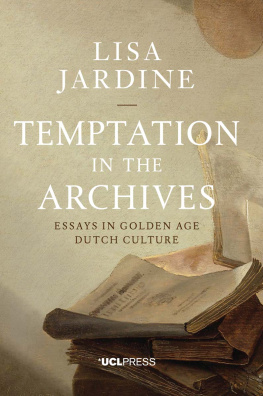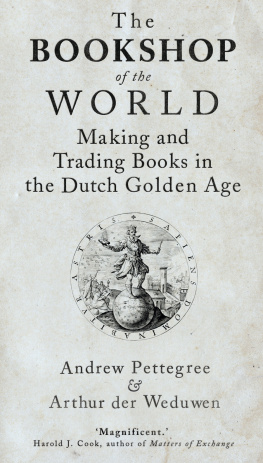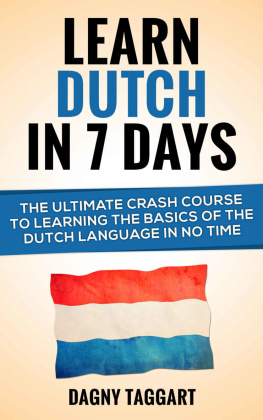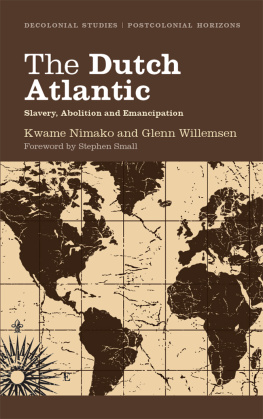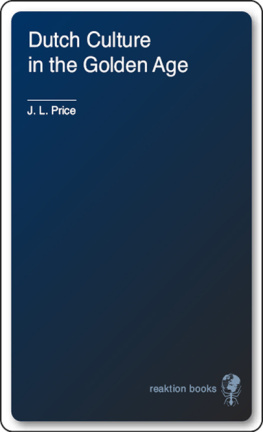LITTLE KINGDOM BY THE SEA
Secrets of the KLM Houses Revealed
Mark Zegeling
A Celebration of Dutch Cultural Heritage & Architecture
INDEX LITTLE KINGDOM BY THE SEA
COLLECTORS ITEMS
THE COLLECTION
Foreword
In 1689, Dutch Stadtholder William III, King of England and Scotland, was homesick for the Netherlands. He lived in London most of the year with his lovely wife Mary Stuart, but the king dreamt of being able to fly back home, through the sky, like a bird. Little did he know, almost three centuries later, flying across the English Channel had become commonplace. I myself, dream of flying back in time, destination Dutch Golden Age, to be able to meet all those fascinating pioneers, entrepreneurs and adventurers who have created this great little Kingdom by the Sea.
This book is your boarding pass to an incredible journey through the history of the Netherlands. Fasten your seatbelts for a flight of fancy! At your own pace and without jet lag, you will meet the colorful inhabitants of the monuments that were the models for the small Delft Blue KLM houses. You will visit the most beautiful palaces and museums, the houses where Rembrandt and Mata Hari lived and you will be able to take a look inside the canal house where Anne Frank and her family hid during the World War II.
If, during this flight through time, you wonder in which era you have landed, then just lick the bricks! A house that was built in the 17th century in Amsterdam often tastes of salt. Why that is, is explained in the story of No. 46. And in this ebook there are another 1001 tall but true tales. I wish you a pleasant journey through history, with a safe landing at one of our beautiful Delft Blue destinations!
Dear Reader
Thanks a lot for reading my book. I spent three years doing research for Little Kingdom by the Sea and I hope you liked the result!
You would do me a tremendous favor by leaving a short review on Amazon. This would give future readers an idea about what to expect, and it would provide me with essential feedback.
Thank you very much in advance for your kind help!

Mark Zegeling
Traveling Through History To A Blue Delft Destination
During the Golden Age, the Dutch traveled around the world to its farthest reaches, enjoying the fruits of their newfound exploring spirit. The small country by the North Sea rapidly became an economic and political world power. The arts and sciences were also given a huge push and the tolerant atmosphere gave birth to a modern, proud, and self-confident society.
At the beginning of the 17th century, the Netherlands, or rather, the Republic of the Seven United Netherlands, was much like a young man on the verge of adulthood, full of vitality and self-determination. Developing into the prime of his life, he quickly discovered his potential, but in his enthusiasm to achieve and conquer, he sometimes lost control. In 1637, for instance, he tripped over a delightful tulip from Turkey, the flower that symbolizes the Netherlands to this day. When the exotic bulb was brought to the country, it acquired the status and worth of a precious gem. Investment and speculation drove the price of a tulip bulb to astronomical heights. Some varieties, like the Semper Augustus , with its purple flames vividly streaked over a white petal, were very rare and therefore, the most desired. Traders offered as much as ten annual salaries for a single bulb. You could have bought a canal house for that kind of money! Tulip mania, as it has become known, has gone down in the history books as the worlds first economic bubble. And, of course, it burst.
A Dutch icon
The Golden Age, with its optimism, courage, passion, vision and resolve still inspires many. It is no coincidence that many of the Delftware KLM miniatures are, in fact, replicas of the most beautiful (canal) mansions and monuments of the 17th century. Most of the historic houses were once built and inhabited by the pioneers, fearless adventurers and spirited entrepreneurs whose ambition added color and luster to the fledgling country. These little blue and white earthenware houses epitomize the Netherlands: they may not be very big, but the facades invariably conceal tall, but true tales and stunning secrets, some of which have left a lasting mark on the world.
One for the road
As is fitting for any icon worth its reputation, the history of these world-class miniatures is quite a story in itself. During the 1950s, airlines were giving away increasingly expensive gifts to their loyal clients, one ever more valuable than the other. In order to keep this in check, the airlines agreed amongst themselves not to give away souvenirs worth more than two guilders (seven dollars). KLM cleverly circumvented the agreement, however, by serving a liqueur at the end of flights, contained in a small, Delftware house. One for the road you could say, because this final round on the house was rarely consumed on the plane. Complaints to the International Air Transport Association were shrugged off by the KLM airline, which argued quite simply that it was just a novel packaging for a drink.
Tasty souvenir
KLM gives away the Delftware houses to passengers who travel in Royal Class. When the tradition began is not precisely documented. The first official mention of a series of miniatures in the shape of Old Dutch houses made of Delft Blue earthenaware and filled with liqueur was in 1957, when distiller Simon Rynbende & Sons delivered 39,710 replicas of nine different houses to KLM at Schiphol Airport. They became a tangible memory of a flight in the most exclusive class, and for collectors a status symbol.
The first Collectors Items
The first collectors item was issued in 1962 to mark the occasion of a unique retrospective exhibition of the celebrated Dutch Golden Age artist, Frans Hals. The Delftware miniature is a replica of the Frans Hals Museum in Haarlem. In 1964, the manufacturer of the KLM houses, Koninklijke Plateelbakkerij Zuid-Holland, went bankrupt. Distiller Rynbende needed a new supplier and eventually chose Goedewaagens Koninklijke Hollandse Pijpen- en Aardewerkfabriek . The collection of houses grew steadily and in 1966, Goedewaagen produced an exclusive replica of Drakensteyn Castle to commemorate the royal wedding of Princess Beatrix and Prince Claus. Three hundred limited edition Delftware replicas of Drakensteyn Castle were filled with Rynbende genever and served as gifts to the royal couples wedding guests. The miniature is not officially part of the KLM collection, but Drakensteyn is much sought after by collectors all over the world.
Hand-painted craftsmanship
Manufacturer Rynbende was taken over in 1970 by Henkes Verenigde Distilleerderijen . At the time, the houses were still produced in Gouda but in 1974, Goedewaagen moved its factory to the Dutch province of Drenthe, where the replicas continue to be hand-painted in Delft Blue. Henkes Verenigde Distilleerderijen was bought by Lucas Bols in 1986 and in that same year, a new collectors item was issued the Royal Palace on Dam Square in Amsterdam. The miniature palace was given exclusively to newly-weds who embarked upon their honeymoon in KLMs Royal Class.
Palatial miniatures
Over the years, several other versions of the Royal Palace were issued. The largest version is about 50 cm wide, 27 cm tall and 11 cm deep (19.5in wide, 10.5in tall and 4.3in deep). This king-size miniature is awarded to the winner of the KLM Open Golf Tournament. Only one has been produced annually since 2004. On April 30, 2013, the day Willem-Alexander ascended the throne to become king of the Netherlands, Business Class passengers who boarded an intercontinental flight at Schiphol Airport were all given a special and small edition of the marvelous Royal Palace. Even more exclusive is the 360 version of the 17th-century edifice, with both front and rear facades, which KLM commissioned in the summer of 2014. This miniature is given by the klm president as a business gift to diplomats and important (foreign) partners.



